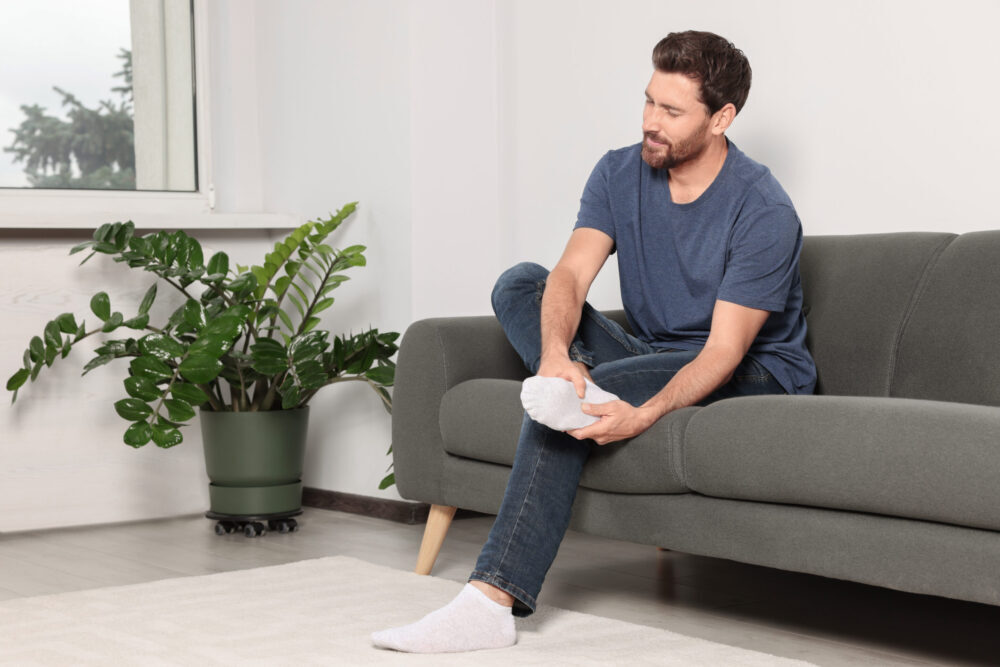Why is My Heel Pain More Painful in Winter?
The heel bone connects the ankle bone to the calf bone and is surrounded by a soft tissue called the plantar fascia. Plantar fasciitis occurs when this tissue becomes inflamed and causes pain at the base of the toes or arch of your foot. This condition commonly affects people between 18 and 60 years old, although it can also affect younger people.
Why Does Your Heel Pain Feel Even More Intense in the Winter?
You might feel heel pain during other seasons. However, there are other reasons why heel pain becomes more painful in the winter. They include the following:
Cold Weather
The cold weather causes achy joints, muscles, and even bones. When the temperature drops, your body responds by sending more blood to the skin to keep it warm. This causes blood vessels to narrow, reducing the amount of oxygen that reaches the deeper tissues of your body.
It is why you feel more tired and sore in cold weather. The reduced oxygen makes it harder for your muscles to move properly and makes them ache.
Winters also cause tissues to tighten and pull on nerves. It is especially true if you spend a lot of time outside or if you work in a cold environment that requires you to wear protective gear all day.
Moreover, when you exercise in cold weather, your body has to work harder than usual just to stay warm. It leads to fatigue and soreness that last long after you stop exercising. It is because your muscles are still trying to maintain their temperature while they cool down from exercise.
Added Weight
You may gain some weight during the holidays, but this does not mean that you will lose it instantly after returning from vacation. Extra holiday food weight will take some time to get rid of. Therefore, you should be aware of this fact before going out partying during the winter holidays.
Another thing is wearing heavy clothing like boots or snow boots during the winter, which puts additional strain on your feet and legs. All these result in more pressure on your ankles and knees as you walk through rough terrain that could cause sprained ankles.
Unsupported Shoes/Boots
Shoes and boots anymore are mass-produced and might not provide the shape of your feet with the support they need. Suppose you are wearing unsupported shoes/boots; then it is likely that it will cause pain in your heel. The lack of support makes your foot unstable, and thus, it cannot withstand any pressure on it.
The repeated pressure causes pain in the heel. If you want to wear sandals or flip-flops, ensure they have enough support for your feet.
How to Prevent Heel Pain?
Consider the following tips to prevent heel pain.
Rest Your Feet Often
Heels are very high-impact areas of the body, and they require a lot of support and cushioning to stay healthy. When you’re on your feet all day, the body naturally starts to compensate for the constant pressure put on your heels by wearing down the heel pads and pushing forward on the balls of your feet.
This causes pain in the back of the heel as well as swelling and redness around the ankle. To prevent this from happening, make sure that you take frequent breaks during the day to sit down and rest your legs.
If possible, stand up on a small stool or box while working at your desk. Therefore, you can alternate which foot is on top and don’t have to put all of your weight on either foot for too long at one time.
Stretch Daily
Stretching every day aids in preventing tight muscles and tendons from contributing to heel pain. Stretching also improves blood flow in the legs, which aids in healing any existing injuries or conditions causing heel pain.
You can stretch your calves by standing near a wall and placing one leg behind you on the floor with the knee bent and the heel on the ground. Then lean forward until you feel the tension in your calf muscle or Achilles tendon at its highest point, just below the knee joint. Hold for 10 seconds, then repeat with the other leg for a total of four times on each side.
Do Not Walk Around Barefoot
Walking barefoot is not a good idea if you have plantar fasciitis. The plantar fascia is a tissue at the lower part of your foot connecting the heel bone to your toes.
When you walk barefoot, it is easy for this tissue to get stretched and torn. This causes heel pain and leads to plantar fasciitis. Wearing footwear that supports your feet as much as possible will help protect your heels and help treat the pain.
Ask Our Podiatrists If You Need Custom Orthotics
Custom orthotics are great for correcting pronation or supination, which might cause your heel pain while providing your feet with the perfect amount of support. In case your feet are pronating too much, this can place undue stress on the soft tissue in your foot and cause inflammation. A custom orthotic will help prevent this from happening by providing support where it is needed most.
If You Have Heel Pain, Get Treatment From Us!
Suppose you’re looking for custom orthotics and need help figuring out where to turn; our pros can help create a custom fit. Waco Podiatry, P.A. has been serving Waco and surrounding areas for over 20 years, and we specialize in treating heel pain.
Our doctors diagnose, treat, and manage all types of foot conditions, such as arthritis, ingrown toenails, heel pain, and other foot disorders that affect the structure. We also provide treatment for common foot conditions like diabetic ulcers, fungal infections, and pediatric foot care.
Whatever your feet or your loved one’s feet might be facing, our clinic can help. Contact our office by calling 254-776-6995, or by filling out our online contact form. Let us show you why we’re experts in treating heel and overall foot pain.

